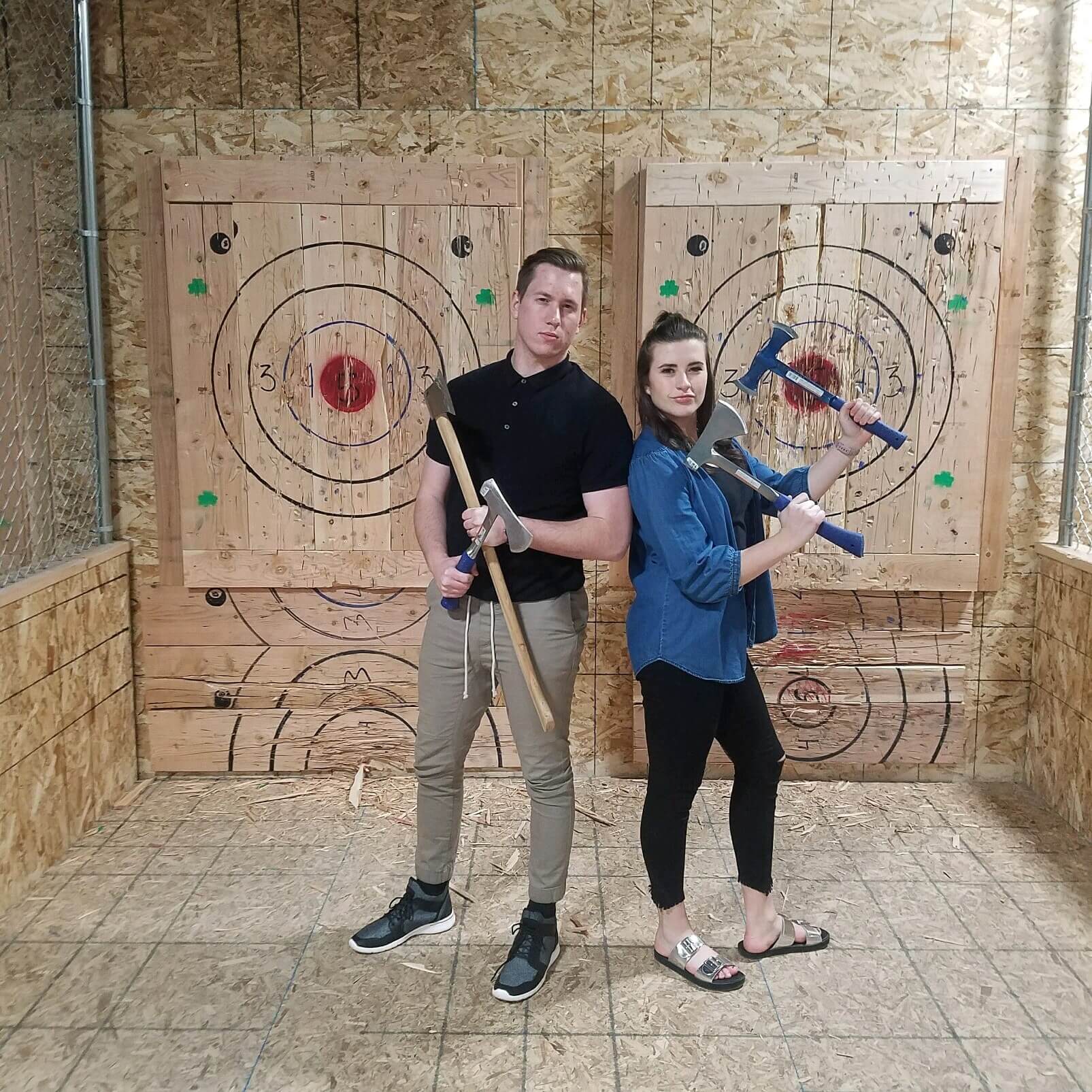Make Memories at Denver Axe Throwing: Tips for a Fun Outing
Make Memories at Denver Axe Throwing: Tips for a Fun Outing
Blog Article
The Fun of Axe Throwing: Exactly How This Sporting Activity Integrates Ability and Adrenaline for a Good Time
Axe throwing has arised as an astounding sporting activity that masterfully intertwines the need for precise ability with the thrill of adrenaline, offering individuals a engaging and one-of-a-kind experience. The act of tossing an axe towards a target requires concentration and method, concurrently fostering an ambience of friendship and pleasant rivalry.
The Origins of Axe Throwing
Axe tossing, an entertainment activity that has obtained considerable popularity over the last few years, traces its origins back to old times. This primal sporting activity go back to early human background, when axes were mostly used as tools and devices. The earliest documents of axe usage in affordable contexts are located amongst the Celts and Vikings, that threw axes for sport as well as in fight training. The technique was not just a leisure activity yet a critical skill for survival and war.
Medieval European warriors, especially throughout the Center Ages, practiced axe tossing as component of their martial training. The Francisca, a kind of throwing axe made use of by the Franks, came to be famous for its harmful accuracy. This typical weapon was developed to be thrown at adversary shields and armor, showcasing its dual energy in both sporting activity and battle.
In even more current history, axe throwing saw a revival in the logging camps of North America in the 19th and 20th centuries. Lumberjacks would participate in friendly competitors, checking their accuracy and stamina by targeting at wood targets. This advancement from a survival ability to a recreational activity has actually led the way for its modern-day revival, with dedicated locations and leagues now celebrating the sporting activity internationally.
Devices You Required
Comprehending the abundant background of axe throwing enhances the recognition of the sport's contemporary version. For competitive and leisure axe tossing, the most commonly made use of kind is the hatchet, commonly considering in between 1.25 to 2 pounds with a take care of size of around 16 inches.
Just as essential is the target. Policy targets are constructed from wood, with softwood varieties like yearn or cottonwood being liked for their capacity to hold the axe and absorb. The target is normally separated into 5 concentric circles, each with a certain point worth, to facilitate rating.
Safety equipment, though frequently ignored, is essential. Protective handwear covers can enhance grasp and stop sores, while closed-toed footwear are a should to safeguard feet from gone down axes (axe throwing denver colorado). Finally, a well-lit, spacious tossing location, full with security obstacles, makes certain a regulated atmosphere where individuals can concentrate on developing their skills.
Fundamental Techniques Described
Understanding the essential methods of axe throwing is crucial for both safety and efficiency. The leading hand needs to be positioned straight listed below the axe head, while the non-dominant hand supports the end of the manage.
Your leading foot must be a little onward, aligning with your target. This positioning help in keeping stability and directing power precisely towards the target.

Security First
Guaranteeing security in axe throwing is paramount to producing a satisfying and injury-free experience. Safety and security gauges begin with the venue layout. A properly designed axe tossing facility features clear demarcations between throwing lanes, strong backdrops to capture stray axes, and non-slip flooring to avoid crashes. Furthermore, appropriate lighting is important to help participants preserve visual accuracy and spatial recognition.
Advantages of Axe Throwing
Axe throwing offers a myriad of benefits that prolong beyond easy leisure. The repeated movement of tossing the axe additionally improves hand-eye sychronisation and fine motor abilities.
Emotionally, axe tossing needs precision, technique, and emphasis, making it a superb Read More Here means to sharpen cognitive skills. The focus needed to hit the target can function as a kind of mindfulness, allowing participants to remove their minds and decrease tension. This mental involvement can be particularly beneficial in aiding people create much better problem-solving abilities and psychological durability.
Socially, axe throwing is typically appreciated in team settings, fostering team-building and sociability. Whether as part of a company event or an informal trip with pals, the sport urges interaction and partnership. Furthermore, the public experience of learning and boosting with each other can reinforce relationships and develop lasting memories.
Conclusion

The earliest documents of axe use in competitive important site contexts are located among the Celts and Vikings, who tossed axes for sporting activity as well as in fight training. Launch the axe when your hands are around at eye level, allowing the axe's natural rotation to lead it in the direction of the target.
A well-designed axe throwing center functions clear demarcations in between throwing lanes, tough backgrounds to capture stray axes, and non-slip flooring to prevent crashes. Participants must be advised on the right method to throw the axe and take care of, stressing managed, purposeful movements over forceful tosses.
In recap, axe tossing stands out as a sporting activity that masterfully integrates dig this ability, adrenaline, and accuracy.
Report this page